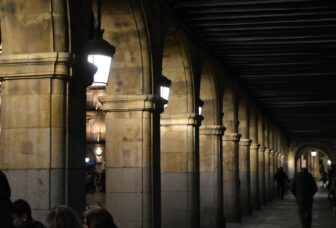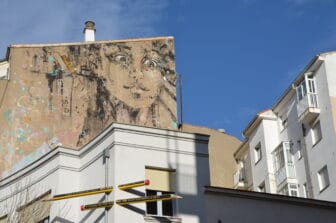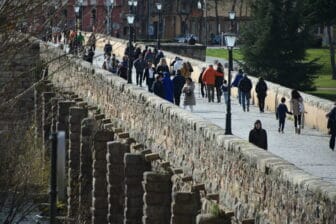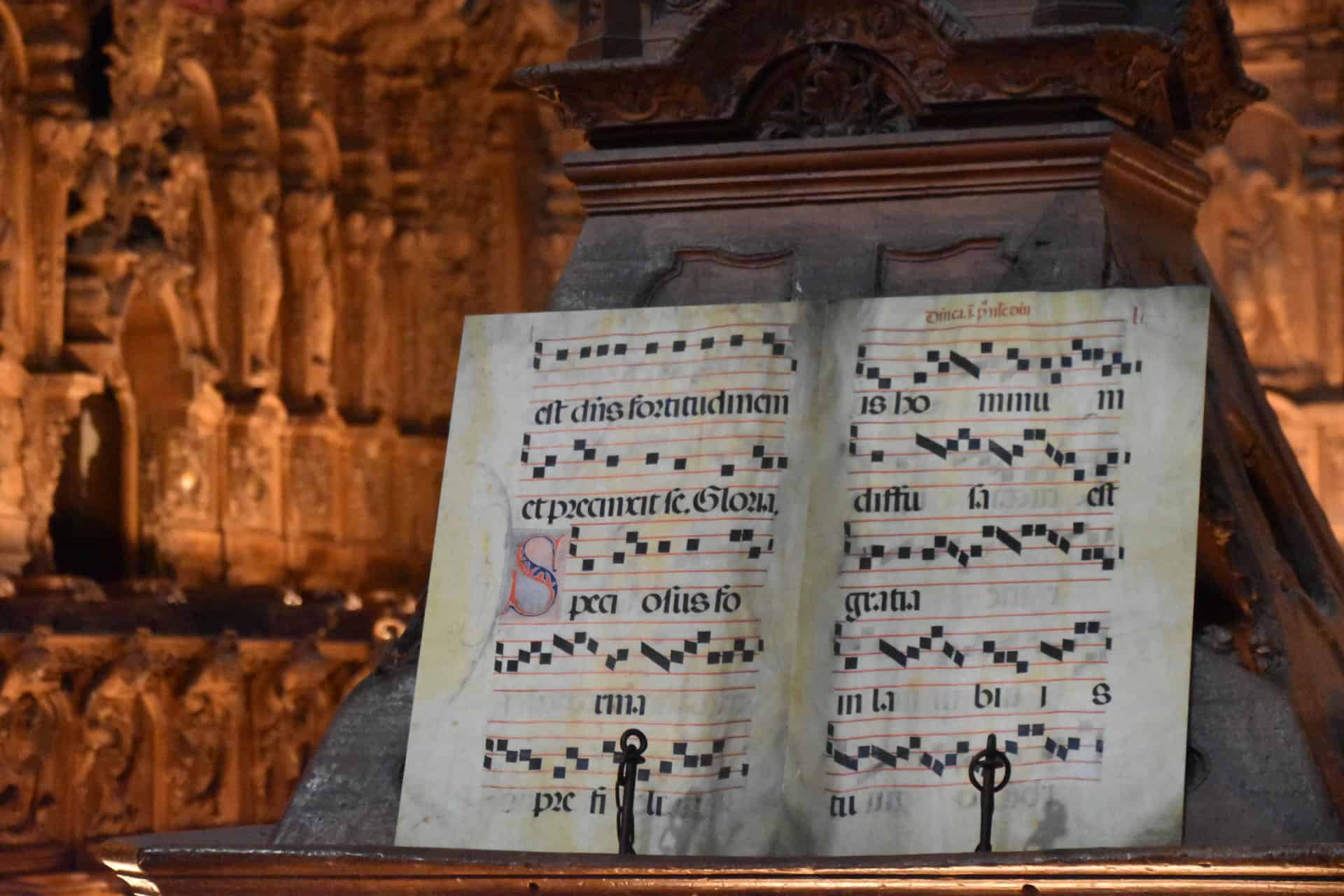
[Dec. 2022] The second day in Salamanca, a town in the western part of Spain, was devoted to sightseeing.
It was past 10am when we went out, but the sun was still low at this time and it was cold.
The man at the tourist information office was polite and kind.
We asked him to write down the main points on the map and tell us the opening hours etc.
After all, this day was New Year’s Eve.
Not all the places were open full time.
Walking tours are convenient and interesting for sightseeing in this kind of town, but unfortunately English tours must be arranged for individuals, and they are expensive and cannot respond to sudden requests.
So we gave up.
It’s a fairly large World Heritage town, but they did not seem to have many tourists from overseas.
Now, we decided to go sightseeing on our own.
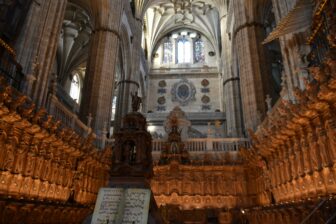
They say that important thing is the cathedral, so we went straight there first.
It was a set of two cathedrals, one old and one new, and it said the entrance fee was €12 per person.
When the person at the ticket office asked where we were from and we answered that one was from Japan and the other from Italy, for some reason they treated us as a group and the price reduced to €6 per person.
You can hold your phone over the QR code and listen to the voice guide, but that’s too detailed, so I tried the kid’s version.
Still, it was too detailed and I could not move forward, so I gave up.
The first thing you see when you enter is the new cathedral.
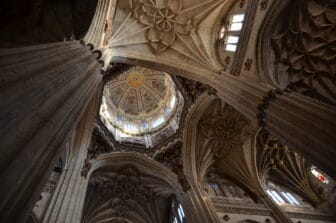
It’s huge.
As in Zaragoza, the Spaniards seem to believe that the bigger the better when it comes to churches.
The most impressive thing was the choir seats.
When I listened to the explanation for children here, it was two-tiered, with over 50 seats in the upper row and over 40 seats in the lower row.
It is said that there are more than 2,300 pipes in the pipe organ at the top.
The next thing that caught my eye was the dome above the main altar.
Together with the decoration of the pillars, it was an elegant beauty.
Although it is called “new”, it is said that the building was started in 1513 and completed in 1733.
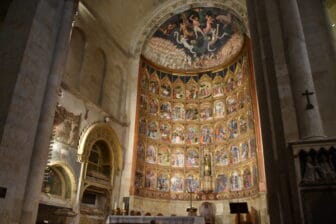
So the old cathedral is older.
Construction began in 1140 and was completed in 1289 apparently.
Without going outside, we went through the side door of the new cathedral and went down the stairs to the old one.
This one is smaller and is decorated with frescoes.
Different atmosphere from the new one, and it was lovely.
The highlight here is the 15th-century main altar.
There are 53 panels depicting the lives of the Virgin Mary and Christ.
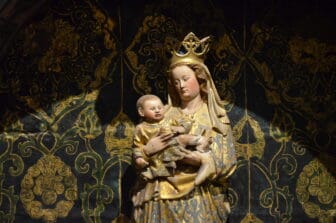
A guidebook describes it as “the best altar of this type outside of Italy”.
There is also an ugly mother and child statue in this cathedral.
In fact, if you look closely at each statue, there are quite a few that make you laugh.
Does it mean that the aesthetic sense of the past was different from the present?
After that, we went out to the cloister and looked into Anaya Chapel, which seemed to be important.
There was a beautiful alabaster coffin in a fence designed to look like people dancing.

In the first place, the reason why the new and old cathedrals are connected is because the number of students increased due to the prosperity of the university in this town, and the old cathedral became too small, so the clergy at the time decided to build a new one.
It’s unique that the new one was built next to the old one instead of expanding it.
Both cathedrals were quite worth seeing.

